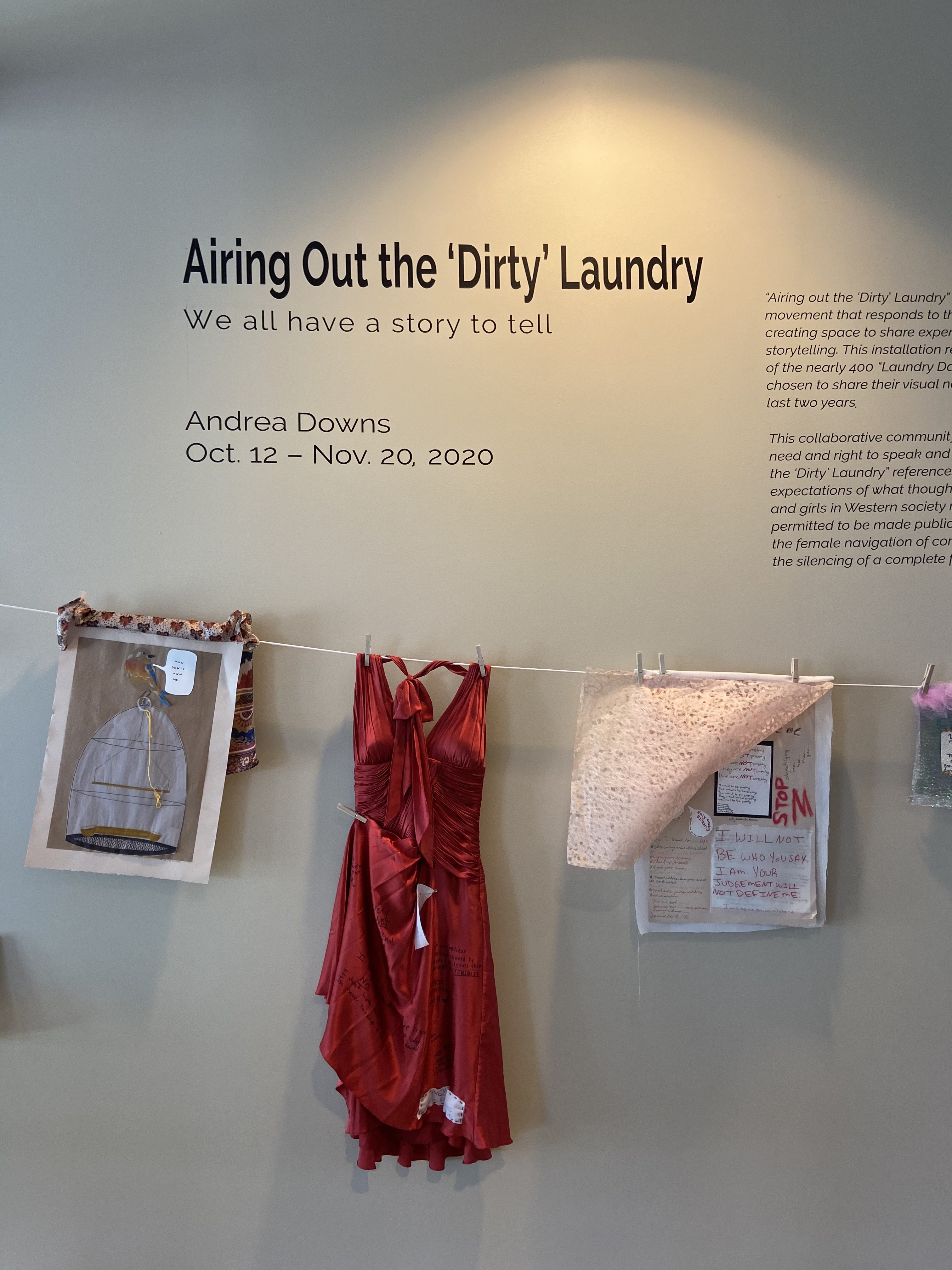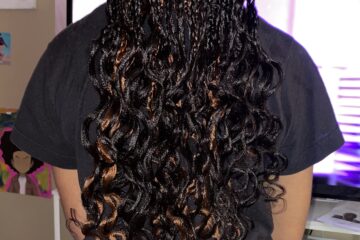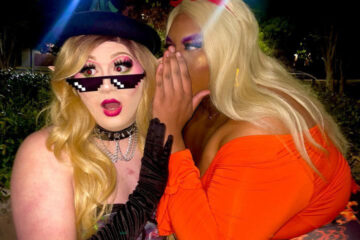Anyone who has walked through the first floor of the DiGiorgio Campus Center since the middle of October is likely to have noticed the clothes hung on the wall by the stairs leading down to Markley’s. Eye-catching clothes of a variety of style with words strewn across them saying things such as “My name does not define me, I do” and “Yes, my legs are hairy” hang on a clothesline as a part of the “Airing Out the ‘Dirty’ Laundry” art movement brought to Rock Hill by artist, activist, community arts organizer and founder Andrea Downs.
Downs, an art teacher with 17 years of experience working with middle and high schoolers and 20 years doing mixed media work, said that she has always focused on the themes of “storytelling and identity and relationships” in her work. Particularly, she said that a huge focus of what she teaches “centers around teaching social justice through art and also contemporary art and contemporary art practices.”
Following the 2016 U.S. election, Downs’ artwork started to shift to respond to the injustices cropping up more and more in the world.In early 2017, following her attendance at the Women’s March, she created a piece of artwork responding to the experience titled “Airing Out The Dirty Laundry.”
This led to Downs beginning to wonder, “What if through art and through visual storytelling, I create a space for women over time and, not just some women but all women, to tell the stories that they want to tell and the experiences that they want to tell and to not feel silenced or shame or that they have to share a specific story that we’re told is OK to be public.”
In February 2018, Downs hosted a get together for twenty other women, where she provided them all materials to use to create artwork related to the silencing of women using articles of clothing they brought with them.
“This space is for you,” Downs explained in reference to what she told the women that day. “This is a space for you to share a story or experience through visual storytelling that addresses something about unity or strength or hope or a resistance of oppression, injustice or exclusion. And that was that. That was kind of the birth of everything. And there were a lot of Laundry Days that followed that…but it started in my family room and now it’s at the museum uptown.”
When explaining the main goals of the Dirty Laundry movement and its accompanying workshops that invite local women to make their own Dirty Laundry pieces, Downs said there were two parts to it.
“One, I knew that I wanted to create the space for women to create their pieces of dirty laundry through visual storytelling. But I also knew that it was going to be- come a part of what I was hoping would be pop up installations on laundry lines where viewers would be invited to engage in unveiling women’s stories that they were sharing. So one of the kind of aesthetic things that I always have invited women to do is to have some kind of a top layer to their piece.”
Downs went on to explain that this top layer would have some transparency to it, beckoning the viewer to unveil what’s underneath and engage more personally with the story underneath.
“And also what I’ve told women kind of all along is, is the way I see it in terms of like symbolism as well, is that it protects their story. A lot of times these are stories that women are being extremely vulnerable and sharing stories that they have never told before, whether they’re about trauma or abuse or sexual assault,” Downs said. “…And I like the symbolism of that where women make those choices about how much they are revealing and how they’re doing it.”
Downs said, in regards to what she wants viewers to take away from their view of the art, “My hope is that it leads to conversation and dialogue and specifically conversation and dialogue about kind of these cultural expectations that we’ve had of women in this country for a long time and specifically about what we are told as women to keep private and what we are told that we can talk about in public…Above all [else], my hope is that it touches individuals on a much more personal level,
like women who may not feel ready to participate in the dirty laundry, but just by going in, they might feel heard because they’ve had the same experience…”
Currently, the “Airing Out the ‘Dirty’ Laundry” display is scheduled to remain up in the DiGiorgio Campus Center until Nov. 20, and a larger exhibition can be found at the Arts Council of York County Perimeter Gallery in downtown Rock Hill until Nov. 21.
Photo by Kaily Paddie




